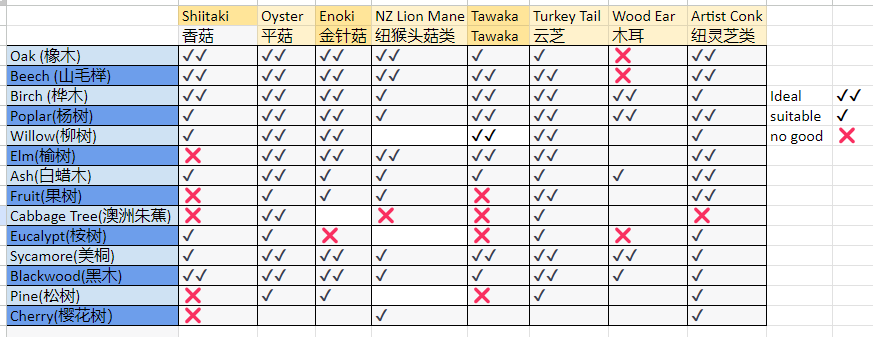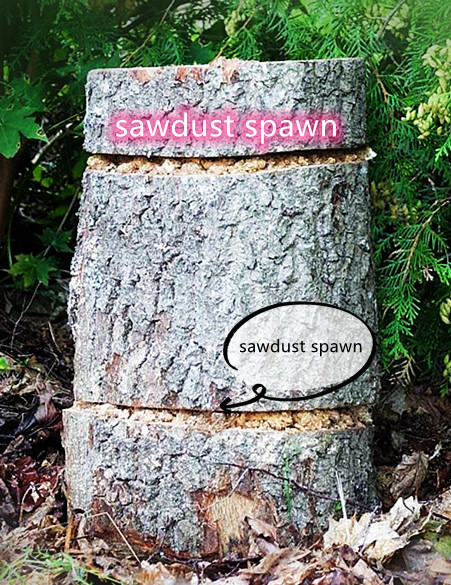The advantages and disadvantages of growing mushrooms on logs & stumps
Advantages
Extended Harvests: Mushroom logs can produce multiple crops of mushrooms over several years without the need for re-inoculation
Low Cost and Sustainability: Using logs as a substrate is a cost-effective method, especially if you have access to fallen or unused wood.
Outdoor Cultivation: You can rest assured as there is no requirement for sanitising and pasteurisation of substrate.
Disadvantages
Longer Cultivation Time: It takes time for mushroom mycelium to colonise the logs fully, and the initial fruiting can take several months to a year. Using sanitised sawdust significantly reduces the cultivation time compared to growing on logs, taking only 2 weeks to a few months.
Matching Mushroom Species with Compatible Trees

Choosing the right time for inoculation.
It’s best to inoculate the fresh cut logs. Waiting too long between cutting and inoculation will make the log dry out and other competing fungi might take over.
Log Method
An ideal size would be a diameter ranging from 10 to 15 cm with a length between 90 to 120 cm.
It is suggested to space the holes 10 cm apart in rows that are staggered 5 cm apart.
To create the holes for dowel spawn, use an 8.5mm bit,Insert the plugs into the holes and tap them gently with a hammer.
For sawdust spawn, use a 12mm bit. use an inoculation tool to push the sawdust spawn into the holes.
Seal the holes with melted beeswax or making bark caps with the tool–Hollow Punch (available in Bunnings or Mega 10).



Sandwiched logs—Super easy approach.
With large-diameter logs or stumps, you can inoculate them with sawdust spawn sandwiched between without tools needed.
Lay a piece of brown cardboard on the ground.Cut the log into a few sections 10-15 cm long, and apply sawdust spawn in between.

Maintenance
Place the logs in a shaded area, ensuring they are not in contact with soil or leaf litter. As the mycelium grows inside the log, it usually doesn’t require special attention. However, if the weather becomes excessively dry, occasional watering may be necessary. Avoid letting the logs stay wet on the outside for extended periods, as this can lead to damage of mycelium and promote contaminant growth.
